In the weeks leading up to AWS re:Invent we were busy gathering data on what’s driving the worlds of cloud computing and optimization. We shared a survey with hundreds of decision makers in DevOps, IT management and Data Engineering with the goal of determining where the industry is, what initiatives are driving innovation and what the future holds for those that are responsible for development KPIs and budgets.
The full State of Cloud Optimization 2024 report will be coming out in February, but we just couldn’t wait to share some of our favorite insights with you. So, here are five of the most important takeaways from the survey.
UPDATE: The full State of Cloud Optimization 2024 report is live! Download here >>

#1 – Cost Concerns are Driving Cloud Optimization
When asked about how they define “cloud optimization”, almost 75% of respondents chose Cloud cost reduction, surpassing Application performance improvement and DevOps and engineering teams efficiency by a significant margin.
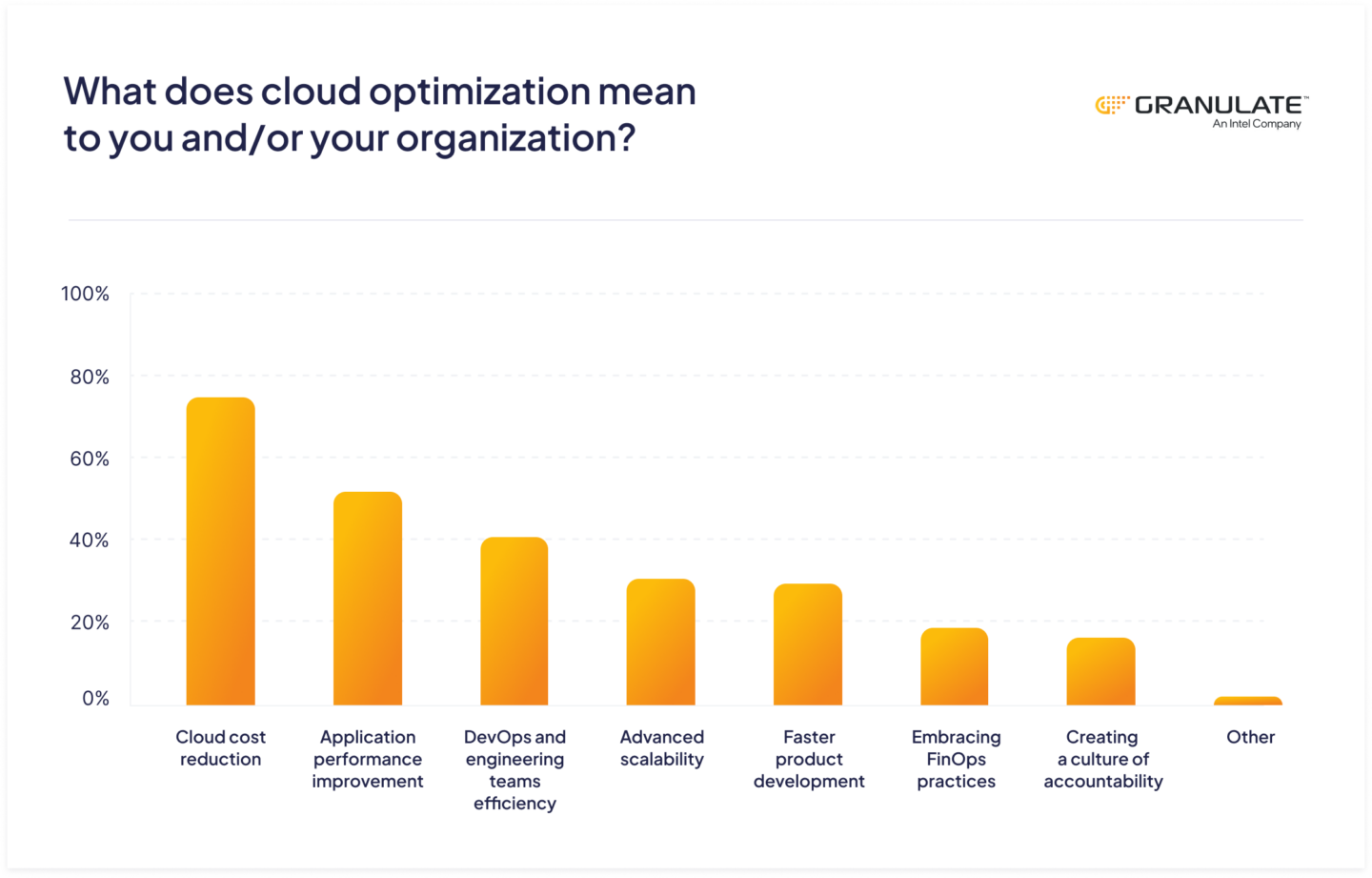
These findings correlate with a shift to cost consciousness that has been holding steady for the past two years with companies finding that in tough economic times, they need to find new ways to optimize their cloud.
#2 – Many Forgo Regular Cloud Spend Review
What gets measured gets managed. So, how often are DevOps professionals reviewing and adjusting their cloud spend? Apparently, only 20% are checking in daily or weekly. While most are looking either monthly or quarterly, a whopping 17% of respondents report reviewing expenditure just once per year.
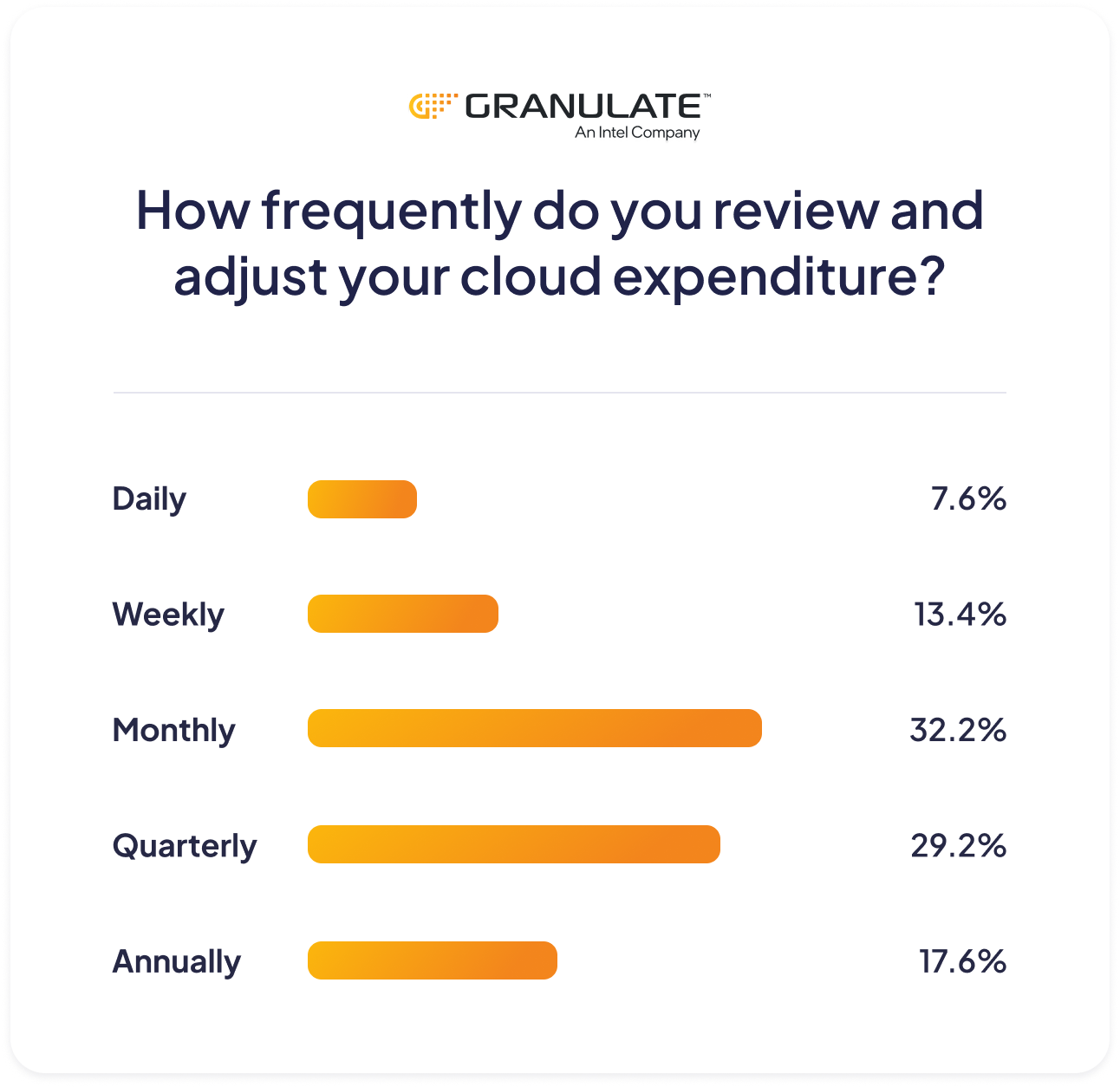
This comes down to creating a DevOps culture at your organization, which is the most important step to cloud cost reduction.
#3 – Kubernetes Workloads are Most Costly and Most Difficult to Optimize
Two questions were posed to determine the similarities and differences between optimization of various workloads.
- What types of workloads are proving to be most costly in your organization?
- What types of workloads are you finding most difficult to optimize?
For both questions, Containers and Kubernetes workloads were the leading response. Microservices and containers can offer a lot of benefits when it comes to scalability and stability, but can often lead to bloated costs, especially when left unattended.
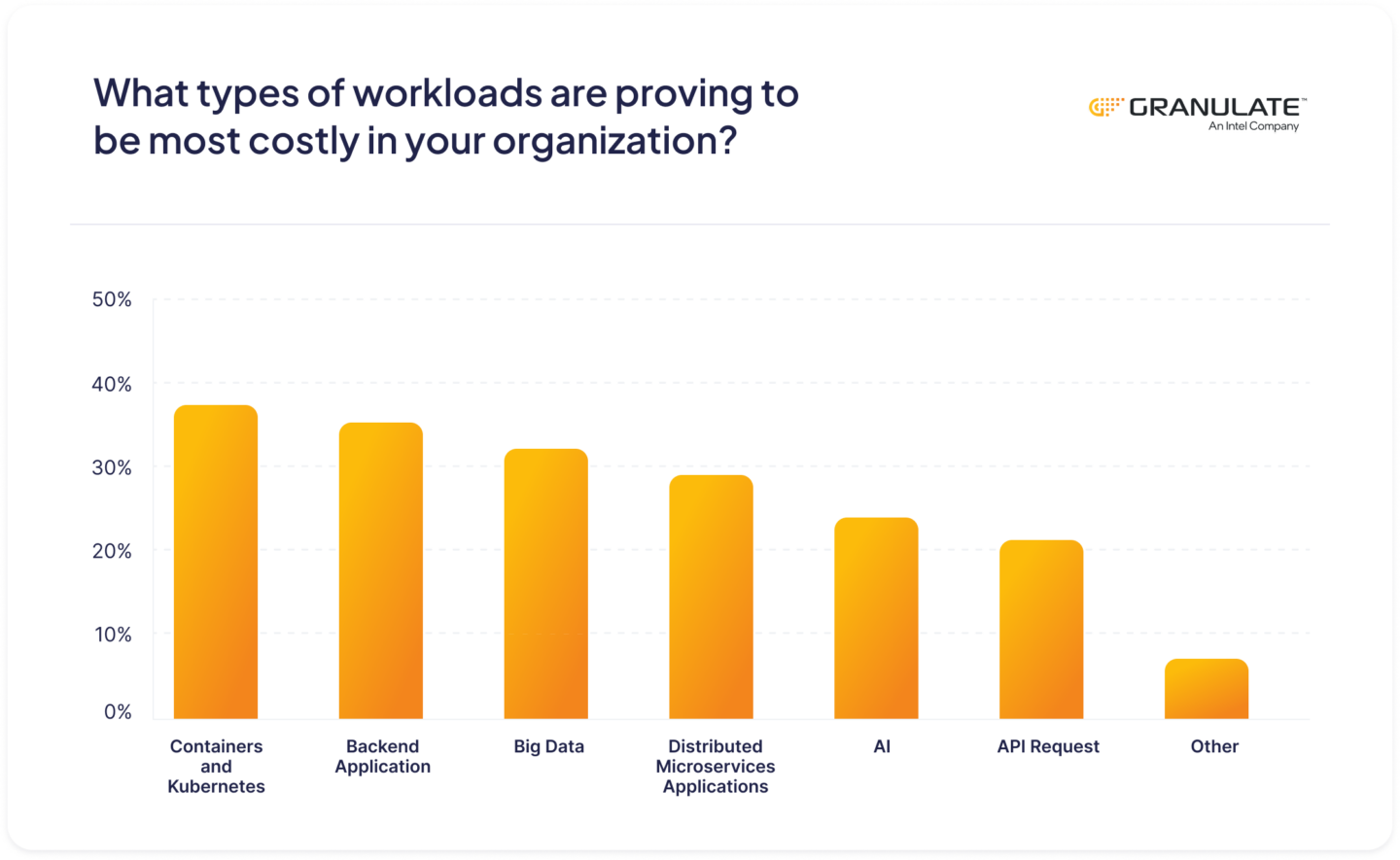
We also found that many of the other answers for each of these two questions showed strong correlations, leading us to believe that the more difficult a workload is to optimize, the more costly it becomes.
For this query, many respondents wrote in additional answers, like EC2, Virtual Machines, Databases and “Lift and Shift Nightmares”.

#4 – Companies Are Prioritizing Log Management and Monitoring in Tech Stack
While Log management and analysis and APM/monitoring/observability tools were chosen more often, no type of optimization tool was selected by the majority of respondents. With these answers, it looks like many companies are prioritizing visibility and organization of cloud resources, a good move no matter where they are in the cloud optimization journey.
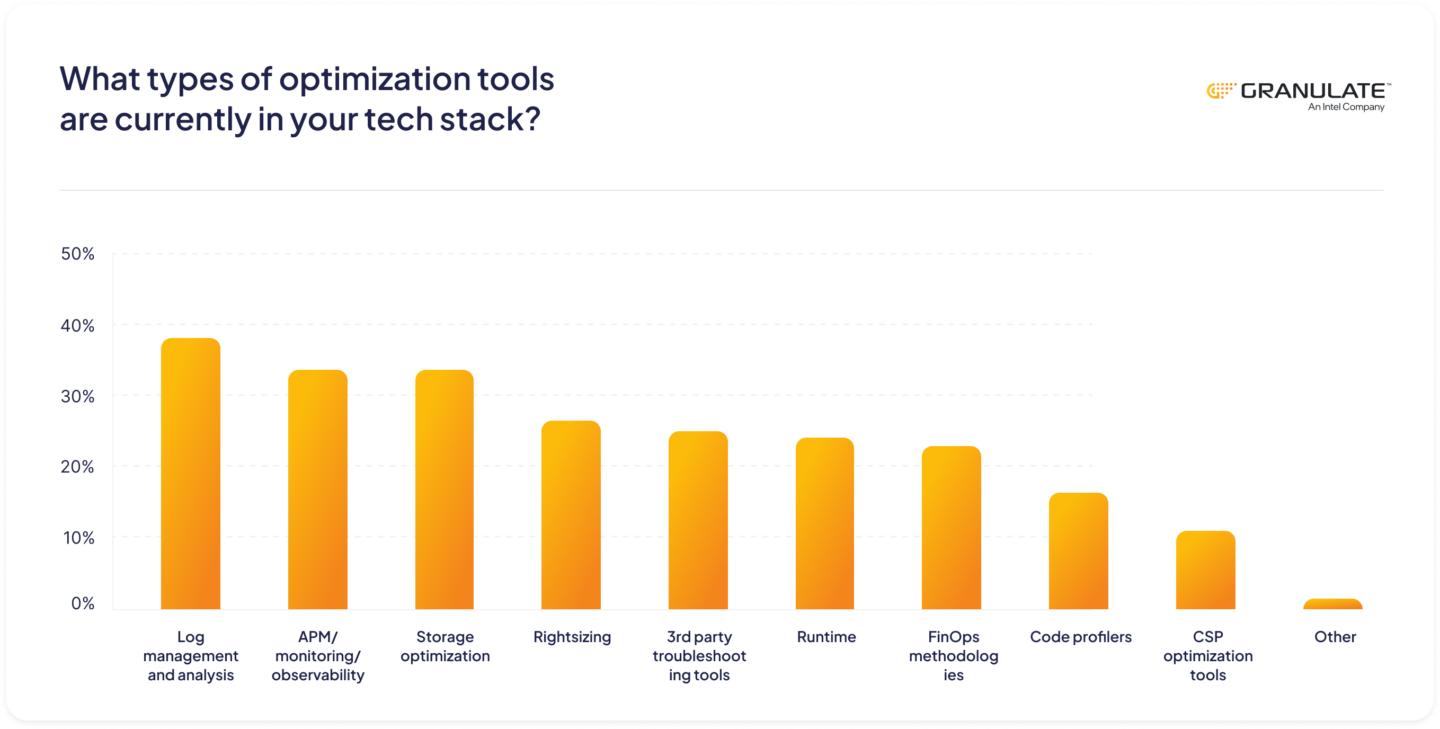
However, with only 26.7% of businesses reporting to use Rightsizing and less than one in four using Runtime optimization, there is likely a significant amount of cloud resources going unutilized. This ties in with another result of the survey, that 30% of companies believe there’s room for improvement regarding their organization’s current cloud optimization efforts.
#5 – Most Do Not Have a Team Responsible for Code Optimization
With cost reduction being such a high priority and many workloads posing such significant cost challenges, there must be a team working full-time to optimize applications’ code, right?
As it turns out, less than half of the respondents report having a code optimization team on staff, with 55% responding in the negative.
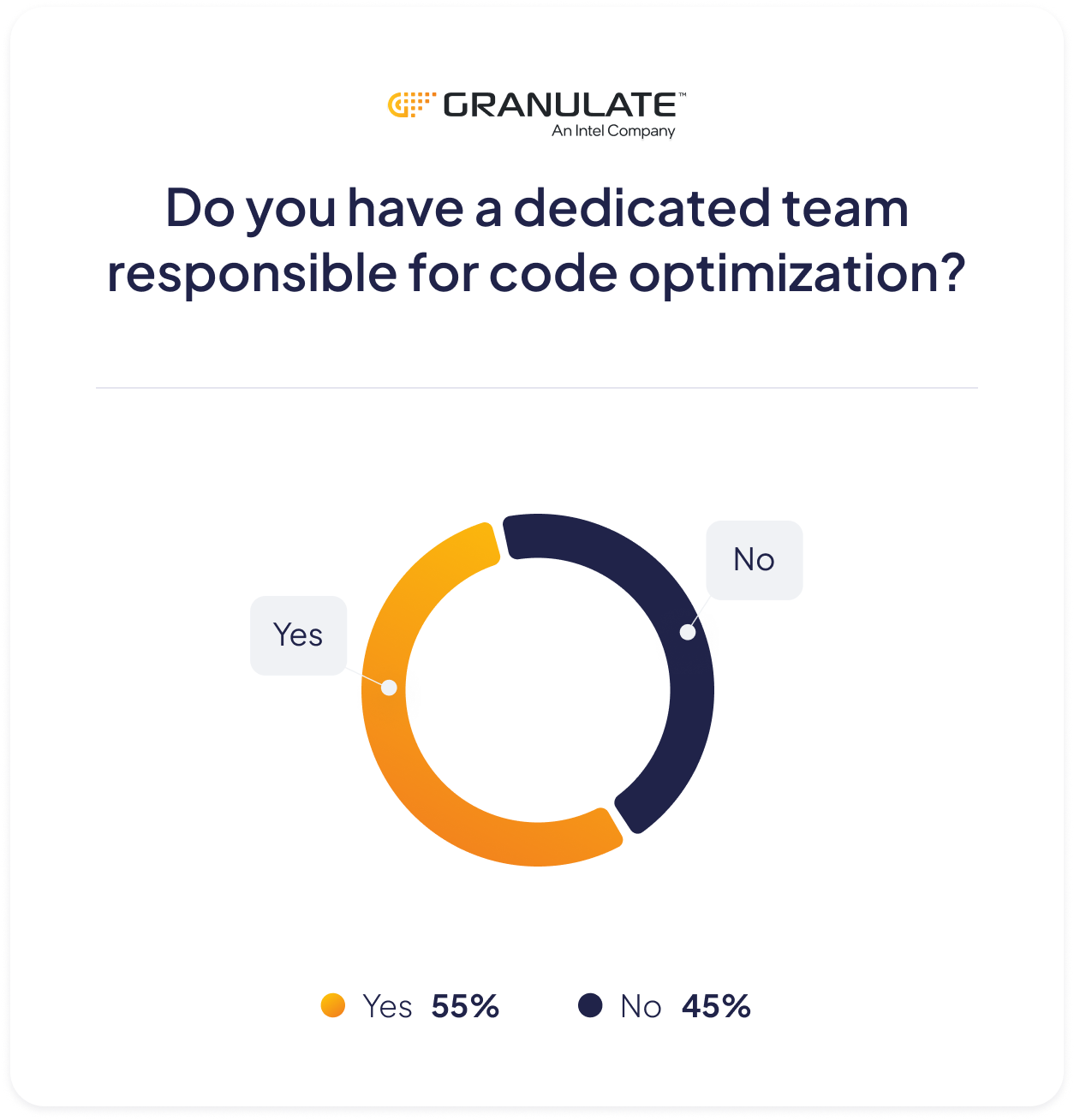
When you can’t have a team working manually on optimization, that’s often a good time to turn to automation. This aligns with the 59.6% of those surveyed considering autonomous nature in optimization tools to be very important to extremely important.
